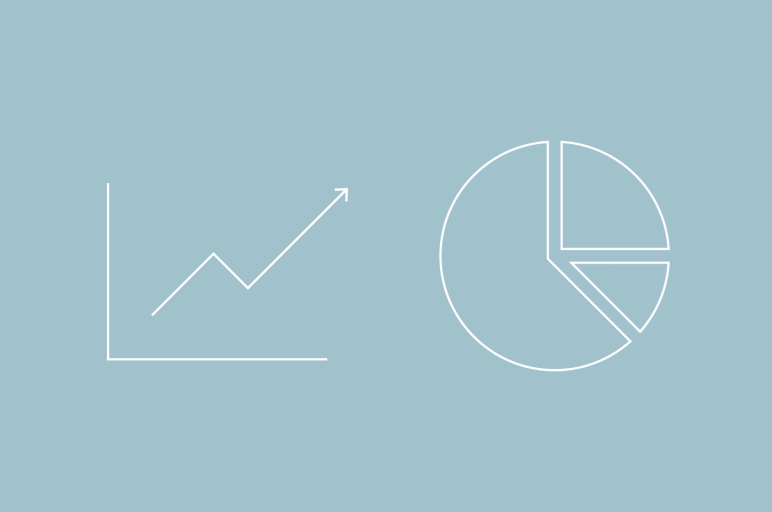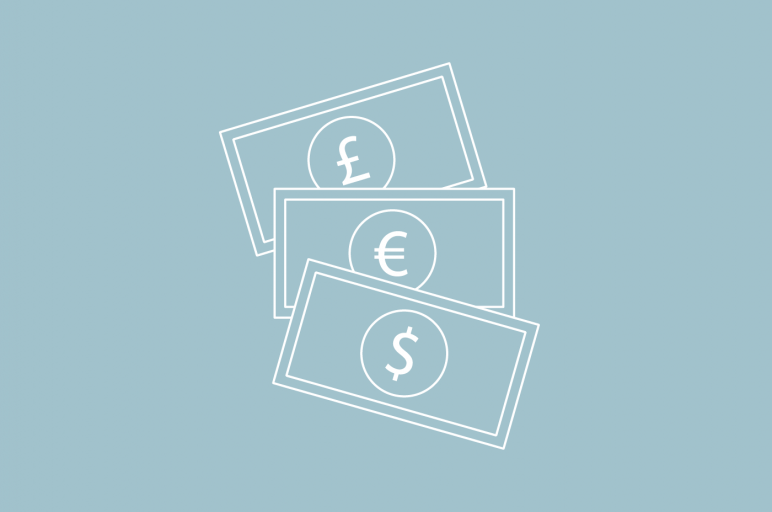- What are ETF issuers?
- Who are the biggest ETF issuers?
- Which issuers are growing the fastest?
- Which issuer earns the most money?
- ETF Issuer Summary Table
What are ETF issuers?
ETF issuers are the businesses that build and ‘issue’ the ETFs to the public via the ASX or Cboe in Australia (or other exchanges like the LSE [London Stock Exchange] in the UK or NYSE [New York Stock Exchange] in the U.S.).
There are ~50 ETF providers in the Australian market, supplying over 350 ETFs for investors to use. Our job is to pick the best products on the market, which is why we adopt a hybrid approach, recommending ETFs to our clients from a range of different issuers.
At Stockspot, we choose the best ETFs from the ETF issuers in Australia to create a high-performing ETF portfolio.
Who are the biggest ETF issuers?
In 2025 BetaShares continues to dominate the ETF landscape, with the highest number of products available on the ASX (94 available as at 30 June 2025). iShares, VanEck and Global X follow behind with 48, 45 and 42 products respectively. Vanguard, with 31 ETFs, offers a more focused range, roughly a third of BetaShares’ lineup.
Of the ETF issuers on the ASX, Vanguard holds the top spot for the largest funds under management (FUM), with over $77 billion, even with a smaller product offering than its peers. BetaShares and iShares are the second and third largest ETF issuers ranked by FUM, with $52.4 billion and $47.3 billion respectively. The top 5 ETF issuers (ranked by FUM) are rounded off with VanEck managing almost $22.6 billion and Dimensional; who despite having only 3 products available in the market, still manage $16.4 billion in funds, beating Global X to the fifth spot by almost $5.7 billion.
| TOP 5 ISSUERS | FUM ($B) June’25 | ANNUAL CHANGE IN FUM ($B) FROM MAR’25 |
| Vanguard | 77.0 | +2.4 |
| Betashares | 52.4 | +1.1 |
| iShares | 47.3 | +1.6 |
| VanEck | 26.6 | +0.9 |
| Dimensional | 16.4 | +0.3 |
Market share by ETF issuer
| ETF Issuer | % of Total ETF FUM |
| Vanguard | 28.3% |
| Betashares | 19.3% |
| iShares | 17.4% |
| VanEck | 9.8% |
| Dimensional | 6.0% |
| GlobalX | 3.9% |
| StateStreet | 3.8% |
| Megellan | 3.5% |
Which issuers are growing the fastest?
The non-major ETF issuers (i.e. those outside of the top 7 – Vanguard, BetaShares, iShares, VanEck, Dimensional, GlobalX and State Street / SPDR) account for 11.6% of the Australian ETF market by FUM, up from 11.4% at the end of 2023. This suggests that although marginal, some of the smaller issuers are gaining market share from the bigger issuers.
ASIC has also created a favourable environment for active managers, by allowing them to hide their portfolio holdings (delaying disclosure to a quarterly basis instead of daily) and without the need to have an external market maker.
As at 30 June 2025 we can see that the top 7 ETF issuers have grown by between 6.8% and 17.8% while the next largest ETF issuer by FUM (Magellan) saw outflows leading to the FUM falling by -8.7%.
GlobalX
In terms of the major players, GlobalX was the standout, increasing its size by 17.8% between 31 December 2024 and 30 June 2025. Global X also has the fourth largest product offering of all the ASX listed issuers with 42 ETFs available.
Vanguard
Vanguard is still one of the dominant ETF issuer in Australia, after seeing an increase of almost $10 billion (15% growth over the past six months).
BetaShares
BetaShares grew their assets by 17.7% over the past six months, and now manages $52.4b of Australian ETF money, making it the second largest ETF issuer by FUM. Their consistent release of new products (now with 94 products available), marketing prowess, as well as strong performance, has helped deliver asset growth for the issuer.
ETF Issuer Summary Table
| Issuer | Number of Products June 2025 | Number of products December 2024 | Product change | FUM ($m) June 2025 | FUM ($m) December’24 | Fum change ($m) |
| abrdn / MSC | 1 | 1 | 0 | $1.1 | $1.1 | 0 |
| Alphinity / Fidante | 2 | 2 | 0 | $765.2 | $834.9 | -$69.7 |
| Antipodes / Pinnacle | 1 | 1 | 0 | $347.0 | $314.9 | $32.1 |
| Aoris / Trust Company | 2 | 2 | 0 | $221.4 | $163.4 | $58.0 |
| Ardea / Fidante | 1 | 1 | 0 | $189.6 | $255.5 | -$65.5 |
| Associate Global Partners | 2 | 2 | 0 | $472.0 | $451.4 | $20.6 |
| Betashares | 94 | 94 | 0 | $52,427.6 | $44,515.9 | $7,911.7 |
| Claremont | 2 | 2 | 0 | $170.0 | $185.0 | -$14.3 |
| Daintree / Perennial | 2 | 2 | 0 | $97.8 | $88.1 | $9.7 |
| Digital X / K2 | 1 | 1 | 0 | $53.9 | $48.6 | $5.3 |
| Dimensional | 6 | 6 | 0 | $16,444.7 | $15,402.5 | $1,042.2 |
| Ellerston | 1 | 1 | 0 | $35.8 | $37.0 | -$1.2 |
| Fidelity | 5 | 5 | 0 | $203.2 | $194.8 | $8.4 |
| Firetrail / Pinnacle | 2 | 2 | 0 | $276.8 | $183.2 | $93.6 |
| Global X | 42 | 38 | 4 | $10,659.7 | $8,770.0 | $1,889.7 |
| Hejaz / EQT | 5 | 5 | 0 | $79.6 | $92.2 | -$12.6 |
| Hyperion / Pinnacle | 1 | 1 | 0 | $3,555.2 | $3,479.1 | $76.1 |
| Investors Mutual Limited | 1 | 1 | 0 | $4.0 | $4.0 | $0 |
| InvestSMART | 4 | 4 | 0 | $297.5 | $303.7 | -$6.2 |
| iShares | 48 | 47 | 1 | $47,306.3 | $42,437.0 | $4,869.3 |
| Janus Henderson | 3 | 3 | 0 | $4.8 | $3.1 | $1.7 |
| JPM / Perpetual | 11 | 11 | 0 | $334.8 | $291.7 | $43.1 |
| K2 | 2 | 2 | 0 | $30.4 | $33.6 | -$3.2 |
| L1 Capital / EQT | 2 | 2 | 0 | $385.0 | $339.0 | $46.0 |
| Lanyon Investment | 1 | 1 | 0 | $131.3 | $139.1 | -$7.8 |
| Loftus Peak / EQT | 1 | 1 | 0 | $663.0 | $634.6 | $28.4 |
| Loomis / IML | 1 | 1 | 0 | $56.5 | $52.2 | $4.3 |
| Macquarie | 7 | 7 | 0 | $770.9 | $252.0 | $518.9 |
| Magellan | 5 | 5 | 0 | $9,506.0 | $10,408.7 | -$902.70 |
| Milford / EQT | 1 | 1 | 0 | $23.7 | $24.0 | -$0.3 |
| Montaka / Perpetual | 2 | 2 | 0 | $214.1 | $210.4 | $3.7 |
| Morningstar | 1 | 1 | 0 | $318.5 | $273.0 | $45.5 |
| Munro / GSFM | 3 | 3 | 0 | $485.6 | $396.7 | $88.9 |
| Nanuk / EQT | 2 | 2 | 0 | $946.0 | $902.6 | $43.4 |
| Perennial | 2 | 2 | 0 | $74.0 | $81.0 | -$7.0 |
| Perpetual | 2 | 2 | 0 | $369.3 | $295.4 | $73.9 |
| Platinum | 2 | 2 | 0 | $193.9 | $299.7 | -$105.8 |
| Plato / Pinnacle | 1 | 1 | 0 | $181.7 | $27.5 | $154.2 |
| Resolution / Pinnacle | 2 | 1 | 1 | $1,830.6 | $1,600.0 | $230.6 |
| Russell Investments | 6 | 6 | 0 | $1,344.8 | $1,227.0 | $117.8 |
| Schroders | 3 | 2 | 1 | $75.3 | $73.3 | $2.0 |
| StateStreet | 17 | 17 | 0 | $10,339.6 | $9,663.4 | $676.2 |
| The Perth Mint | 1 | 1 | 0 | $1,609.2 | $1,126.2 | $483.0 |
| VanEck | 45 | 43 | 2 | $26,558.6 | $23,609.9 | $2,948.7 |
| Vanguard | 31 | 29 | 2 | $77,020.3 | $67,165.0 | $9,855.3 |
| Vaughan / IML | 1 | 1 | 0 | $31.9 | $28.5 | $3.4 |
If you want to take the hassle out of picking the right ETFs for your investment portfolio, learn more about how Stockspot builds diversified ETF portfolios with, utilising a range of products from different issuers.
Explore Stockspots investment portfolios and historic returns




